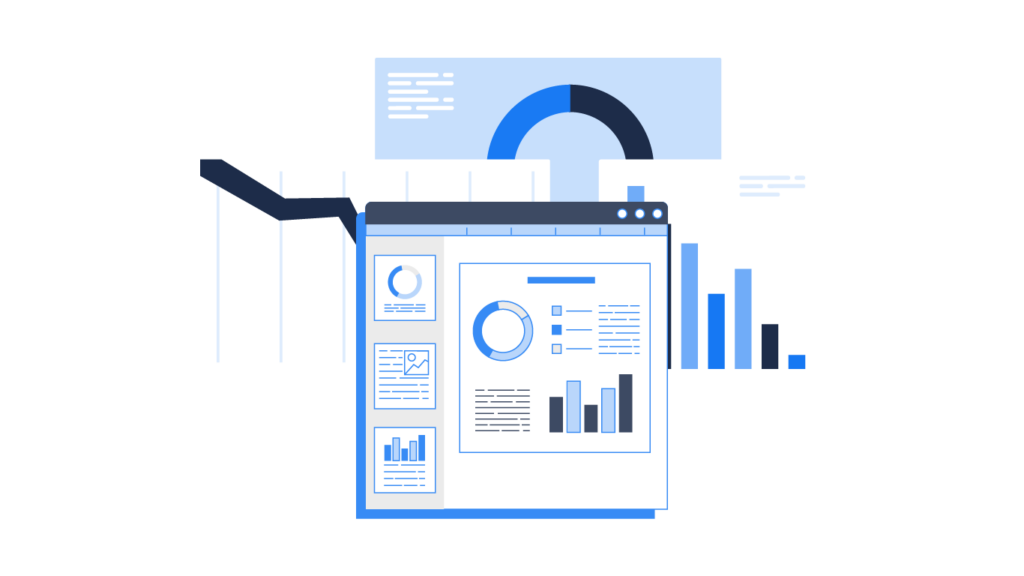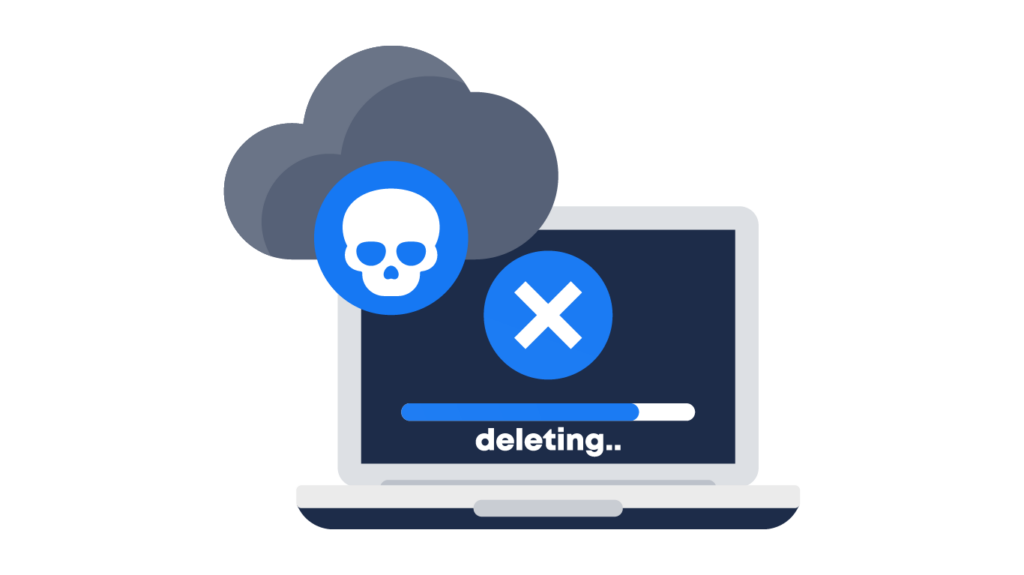Today, establishing a cybersecurity threat management process is more challenging than ever. With 4,145 publicly disclosed breaches occurring in 2021 and exposing 22 billion records, IT departments must work hard to protect their organizations.
This is why having a solid threat management framework in place is essential. It can prevent financial losses from leaked data, downtime, and compliance issues, as well as reputational damage and trust issues with clients.
IT should take the lead in ensuring that all departments of the organization are identifying, analyzing, evaluating, and addressing the cyber threats that relate to your business. It should ensure there is a clear route to report potential issues before they cause major problems.
Why is cyber threat management important today?
There are many factors that have come together in recent years to prove how vital cyber threat management is. They include:
| Factor | How it affects cyber threat management |
| The rise in remote working | Employees are out of sight of IT and could be using unsecured networks and be exposed to other threats. |
| Popularity of Software as a Service (SaaS) solutions | Employees use SaaS apps in their day-to-day life and may use them for work purposes, despite potential security and compliance frailties. |
| New regulations | Jurisdictions around the world are continually bringing in new legislation relating to data protection that adds to the compliance burden. |
| Reduced budgets | With inflation at such high levels, all departments need to cut corners accordingly. With increased threats, reducing the money spent on cyber threat management is incredibly challenging. |

Cyber threat management challenges
Lack of visibility
This can occur due to a lack of monitoring and detection capabilities, as well as a lack of communication and information sharing between different parts of the organization. If employees are using shadow software – unauthorized programs and devices – instead of those sanctioned by IT, the department can struggle to foresee threats. With the approved solutions, IT can make sure they are safe, secure, and up-to-date. However, the unapproved software offers no such guarantees.
Lack of insight and reporting
Without proper insight and reporting, organizations may struggle to prioritize and respond to cyber threats in a timely and effective manner. At the same time, it can be difficult to gain accurate insights into how you handle security threats and the return on investment of your threat management processes because it requires a large sample size that you might not have access to. Also, as threats change over time, you might need to keep changing your KPIs, and this leads to difficulty in tracking progress.
Skills shortage
Whether it is due to a lack of training and development opportunities, a lack of recruitment and retention strategies, or something else, skills shortage is a true challenge to IT departments today. With 1.1 million people employed in cybersecurity in the US, but 700,000 unfilled vacancies, you can see the major skills gap in the industry. As demand for cyber skills increases due to growing threats to organizations, supply of new talent cannot keep up. This makes it increasingly difficult for businesses to adequately staff their cyber threat management process.

Staff burnout
As a direct result of the skills shortage in the industry, there is an epidemic of staff burnout too. The constant pressure to monitor and respond to cyber threats can lead to physical and mental exhaustion. The Information Systems Security Association found that 38% of cybersecurity professionals admitted to being burned out as they attempted to deliver more work with fewer resources.
Third-party vendors
Organizations often rely on third-party vendors for various services, such as cloud computing, software development, and managed IT services. These vendors may have access to sensitive information, and if they don’t have proper cybersecurity measures in place, it can put the organization at risk.
While the IT department can maintain a certain amount of control over internal affairs, you often just have to take on trust that third-party vendors will handle company data with due care. The actions of someone in your supply chain can still reflect badly on your business.
The 6 steps of a bulletproof cybersecurity threat management process
1. Identify and assess cybersecurity risks
Each organization is exposed to a variety of cybersecurity risks to varying degrees. In order to correctly pitch your cybersecurity threat management process, you need to understand the risks to which you are most exposed.
This involves you taking a deep dive into your existing systems and identifying what these threats are and where the vulnerabilities lie. Think about where problems have occurred before and what the causes were.
Were they human errors due to insufficient training or confusing procedures? Were they related to shadow IT?
Whatever the issue, this is a risk until you take action to prevent it from happening again. Monitoring for new threats and changing regulations is also essential when identifying cybersecurity threats.
Once you know the security risks, you can assess the likelihood of them occurring and the potential consequences, too. This allows you to prioritize your resources in dealing with each threat, starting with the most likely to occur and with the biggest potential impact and working down the list.
2. Protect your network, users, and devices
Having identified the most impactful threats, you can use this information to protect the network, users, and devices from security incidents. This can involve a number of different elements, all aimed at reducing the chances of attackers accessing the company systems.
The security controls you install could include, for example, the use of firewalls to filter out malware attacks and prevent malicious actors from ingraining themselves in your network. This offers some protection when employees engage in risky behavior using devices connected to the network. Virus protection is another way to fight attacks on your systems.
Continually reviewing and implementing remote access control means that, even if a bad actor takes control of an employee’s device, they won’t be able to access all sensitive business information; only that for which the user has permissions. This limits the damage of an attack.
Other ways to prevent insider threats include creating a remote working cybersecurity policy that spells out your expectations and best practices.
3. Detect incoming threats
Because cybercriminals are continually honing their craft and employees are sometimes lax in their security measures, there are times when there will be threats to your cyber security. Being able to detect these threats is the key to preventing them from running in the background for a length of time and causing major damage to your network.
Using the data that you glean from logs and endpoints, you could catch sight of problems in time. Encouraging a speak-up culture amongst employees is another way to ensure you tackle threats early on. If an employee feels comfortable reporting an error that they made – opening an attachment with a virus, for example – you can contain the issue. If your staff is fearful of admitting problems of this kind, the issue can get out of hand before you have sight of it.
Being able to monitor all of the devices connected to your network for unauthorized programs helps you spot the vulnerabilities in your system and remove them before the threat develops into an attack. Vaultry gives you this oversight, alerting you as soon as non-sanctioned software appears on any device connected to your network.
4. Respond
You should have a process in place to respond to threats, both potential and imminent. By having a playbook to work from, you can be methodical about your response and refrain from panicking, which could lead to your team delaying or missing vital steps to eradicate attacks from your network.
Responding quickly and effectively using a pre-designed incident response plan is important to minimize disruption, remain compliant with data laws, and maintain trust in the brand.
Your plan should involve methods for containing the threat in the short term by segmenting the attacked area in order to take stock of the situation. This gives you time to create the long-term solution.

5. Recover
With the threat contained, you can move to the recovery stage and clean up the situation with full oversight of the extent of the attack. You can remove the attacker and any malware from the network before getting to work to create patched, clean versions of the attacked assets to replace those affected by the attack.
The recovery stage begins with the immediate repair of your network assets and securing your network. But it also continues in the background for a while afterward. You should keep an eye on the network to ensure all is running as it should and that the attackers do not and can not return.
6. Run ongoing risk assessments
Another important aspect of minimizing the effect of cyberattacks is to run frequent cybersecurity risk assessments. As your business changes and the threats morph, the levels of risk have to be adjusted, too.
One type of threat that seemed insignificant at one point might now be an imminent issue for your organization, and the only way to keep your priorities up to date is to run these regular assessments.
Talk to stakeholders across the business and request their input on which threats pose the greatest security risks to your organization. Collate this information and use it to inform your response plan, IT security policy, employee training, and other aspects of cybersecurity threat management.
FAQ
What are the four types of threat detection?
The four types of threat detection are configuration, modeling, indicator, and threat behavior. Each of these can serve different purposes, depending on what your business wants to achieve. In a situation where you need to find similar attacks, you may want to use threat behavior analytics. But in a situation where you’re facing the challenge of identifying novel attacks, modeling may be more appropriate.
What is cyber risk vs cyber threat?
Cyber risk is the likelihood of an attack happening and the potential damage it could do. For example, an organization may have a high risk of a data breach due to a lack of security measures but a low risk of reputational damage if the incident is handled properly.
A cyber threat, on the other hand, is an individual action that could lead to an attack. It can come in many forms, such as malware, phishing, and ransomware.
What is threat modeling in cybersecurity?
Threat modeling involves analyzing an element connected to your network, understanding the threats to it, and creating a plan to protect it and mitigate that risk.
Conclusion
You need a solid cyber security threat management process to understand what the threats are, put in place plans to minimize the risk, and respond and recover effectively if it does occur. Creating a plan of action to battle cyber criminals helps you save the organization from excess disruption caused by cyber-attacks and makes it difficult for them to succeed in their aims.
Vaultry plays an important role in the threat management process, allowing IT departments to monitor all connected devices and discover unauthorized programs before criminals can exploit their vulnerabilities and attack. Get started with Vaultry today.



